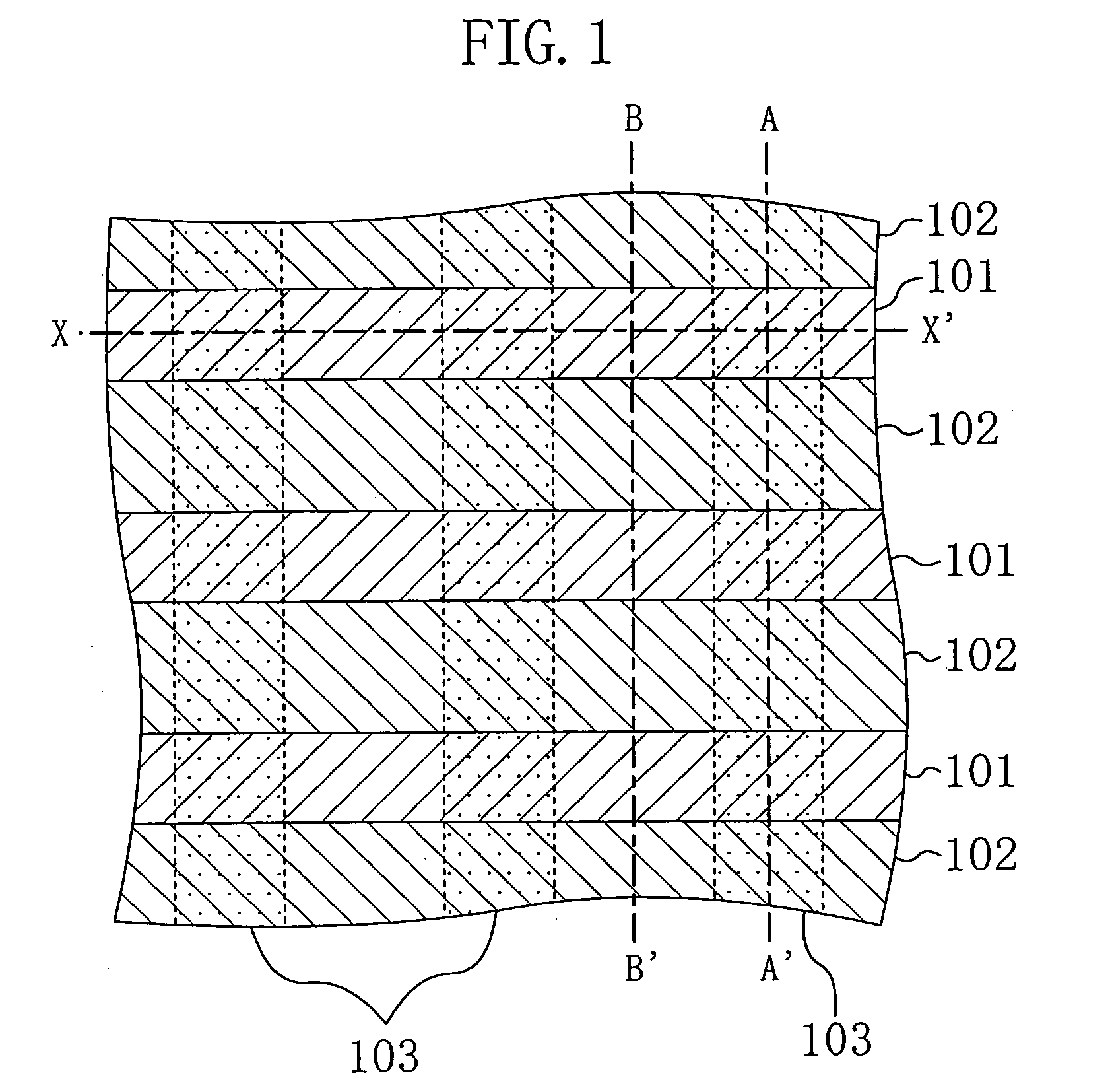Semiconductor device and fabrication method therefor
a technology of semiconductors and semiconductors, applied in semiconductor devices, electrical devices, transistors, etc., can solve the problems of increasing p-well resistance and the inability to reduce the area of memory cells, and achieve the effects of reducing n-well resistance, increasing latch-up breakdown voltage, and increasing p-well resistan
- Summary
- Abstract
- Description
- Claims
- Application Information
AI Technical Summary
Benefits of technology
Problems solved by technology
Method used
Image
Examples
embodiment 1
[0037] Referring to the drawings, a description will be given herein below to a semiconductor device according to a first embodiment of the present invention and to a fabrication method therefor by using the memory cell portion of an SRAM composed of MIS transistors.
[0038]FIG. 1 is a plan view showing an example of the layout of the memory cell portion of the SRAM according to the present invention. FIG. 2 is a cross-sectional view taken along the line A-A′ of FIG. 1. FIG. 3 is a cross-sectional view taken along the line B-B′ of FIG. 1. FIG. 4 is a cross-sectional view taken along the line X-X′ of FIG. 1. In FIG. 1, the depiction of transistor structures formed on individual well regions is omitted.
[0039] As shown in FIGS. 1 to 4, a plurality of N-well regions 101 and a plurality of P-well regions 102 are formed to be alternately arranged, each extending from a surface of a P-type semiconductor substrate 100 toward the inside thereof. Between the N-well regions 101 and the P-well ...
embodiment 2
[0057] Referring to the drawings, a description will be given herein below to a semiconductor device and a fabrication method therefor according to a second embodiment of the present invention by using the memory cell portion of an SRAM composed of MIS transistors with reference to the drawings.
[0058]FIG. 12 is a plan view showing an example of the layout of the memory cell portion of the SRAM according to the present embodiment. FIG. 13 is a cross-sectional view taken along the line E-E′ of FIG. 12. FIG. 14 is a cross-sectional view taken along the line F-F′ of FIG. 12. FIG. 15 is a cross-sectional view taken along the line Y-Y′ of FIG. 12.
[0059] In FIG. 12, the depiction of transistor structures formed on the individual well regions is omitted.
[0060] As shown in FIGS. 12 to 15, a plurality of N-well regions 201 and a plurality of P-well regions 202 are formed to be alternately arranged, each extending from a surface of a P-type semiconductor substrate 200 toward the inside ther...
PUM
 Login to View More
Login to View More Abstract
Description
Claims
Application Information
 Login to View More
Login to View More - R&D
- Intellectual Property
- Life Sciences
- Materials
- Tech Scout
- Unparalleled Data Quality
- Higher Quality Content
- 60% Fewer Hallucinations
Browse by: Latest US Patents, China's latest patents, Technical Efficacy Thesaurus, Application Domain, Technology Topic, Popular Technical Reports.
© 2025 PatSnap. All rights reserved.Legal|Privacy policy|Modern Slavery Act Transparency Statement|Sitemap|About US| Contact US: help@patsnap.com



